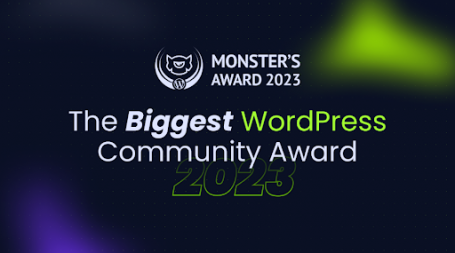As one of the most popular and widespread content management systems, WordPress was used to make 450+ million sites. Its intuitive, no-code website builder enables users to create fully functional and appealing sites for their purposes, including business, with nearly no effort. However, if your goal is to get noticed and drive potential customers, simply creating a good-looking site isn’t enough to accomplish your objectives.
With so many websites out there, competing for users’ attention isn’t easy. It takes a holistic, strategic approach to stand out from the pack and ensure that your target audiences notice you, visit your site, and, hopefully, convert. And SEO keywords play a massive role in this process.
Keywords make a huge part of WordPress SEO. They enable you to appear in relevant organic search results and get in front of your audience. In this guide, we are going to tell you how to find the right queries and optimize WordPress site for them to achieve success.
Master Keyword Research With Specialized Tools
While integrating relevant search queries into your pages and content can take some time, finding promising terms to target might be the hardest part of the process. Keyword research can be a rather tedious and time-consuming process that requires you to consider plenty of factors, such as relevance, search volume, competition, difficulty, and others. It can seem a massive challenge for beginners who aren’t well-versed in SEO. But this process is made simple with the right tools.
Although the options are broad, you can find a tool that will set you up for success with the help of trusted software comparison sites. For example, at Top10seosoftware.com, you can explore the most reliable and popular SEO keyword tools, compare them, and make an informed choice of the right software for your business.
Once you select the best tool for keyword research, here’s a step-by-step guide to exploring target queries:
- Brainstorm words and topics related to your business and content.
- Insert related terms into the search box of the selected tool to get a list of queries.
- Add filters, such as your target geographic location, specific text you don’t want your queries to contain, and others.
- Go through the list of recommended terms and compare them based on different metrics. Pay attention to search volume and competition, in particular. Mid to high volume means that a lot of people are looking for a specific query on the web, which makes it a good opportunity for visibility. Low competition means that fewer businesses target a specific keyword, which makes it easier to rank for.
After getting through these steps, make a detailed list of queries to target in your SEO for WordPress strategy. Be sure to include different types of keywords, including short-tail and long-tail ones, for maximum impact. Also, consider running a deep competitor analysis to see which queries help your competitors appear on top of search engine result pages (SERPs). This can help you gain additional ideas for your own site.
Pro tip: To attain a stable result and continue improving your rankings in the long run, leverage keyword tracking. Keep an eye on your rankings for target queries to see how your strategy works for you and detect areas for improvement.
Tips for Effective Content Keyword Integration
After you explore your target queries via SEO keyword tools, you can start optimizing your site, and it’s wise to begin with its core content.
Here are a few basic but effective tips to handle keyword integration like a pro:
Don’t Overdo It
Without any doubt, keywords are important for promoting your site. However, their integration can only bring tangible (and positive) results when approached wisely.
Despite a common misconception, more is not always better in SEO. Integrating too many queries is called stuffing, and it’s considered a counter-effective technique. It leads to poor-quality, spammy-looking content that users don’t enjoy. Since Google rewards sites that deliver people-centered content, it’s recommended to keep the number of target queries moderate – around 1-2% of your content.
Keep It Natural
High-quality content shouldn’t give out that your goal is SEO ranking in any way. It should read naturally and deliver actual value to readers.
To ensure this, you need to integrate your queries in the most organic way. Avoid too awkward formulations and keep your readers top of mind when writing content.
Distribute Queries Evenly Through Different Parts of Your Content
To achieve the best SEO performance, you need to help search engine bots crawl and index your pages efficiently. To ensure this, you need to spread your target terms evenly across different content elements.
Namely, by inserting SEO keywords into headings, subheadings, and throughout the body text, you can help search engine bots understand the subject of your pages better. Also, it’s a good practice to incorporate your primary target word or phrase into the first 100 words of your text. This simple rule makes it easy both for indexing bots and users to understand the topic right away.
Optimizing Meta Tags for a Higher SEO Ranking
Meta tags are bits of HTML code. They are used to provide additional info about your pages and content to search engine bots and hence, help them understand your site thoroughly and match it to the right user searches.
If you are wondering why optimizing them matters for your WP site, you should bear in mind two core reasons:
- These tags help bots understand your site better and rank it accordingly for relevant searches. Hence, they directly affect when and how high you appear in SERPs.
- Meta titles and descriptions are integral elements of the result pages. They are displayed in SERPs as short snippets under your site’s name and URL and provide brief descriptions for a particular page. They greatly affect users’ decisions to click on your site (or not), hence, affecting your traffic, which also matters for rankings.
Here are a few tips for optimizing your pages’ titles and descriptions to make the most out of your SEO for WordPress:
- Keep them short. The perfect length of your meta title is between 50 and 60 characters. For descriptions, the general rule of thumb is to keep them between 155 and 160 characters.
- Primary SEO keywords should be placed as close to the beginning of a title and description as possible. However, it’s important to insert it naturally and avoid stuffing.
- Make your titles and descriptions clear, straight to the point, and descriptive to give both bots and users a good idea of what your page is about.
- Make your titles and descriptions unique for every page to avoid duplicate content.
- Add powerful words and clear calls to action (CTAs) to boost the impact.
- Make them engaging enough to encourage clicks. Leverage specialized analytical tools to track the number of clicks to assess the effectiveness of your meta tags.
Optimize URLs and Permalinks for the Best WordPress SEO Outcomes
URLs and permalinks (common in the WP society) are basically web addresses that take users to specific pages or pieces of content on your site.
A URL consists of a protocol (http or https), domain (e.g., site.com), and path to a specific page. The structure of a permalink also contains protocol, domain, and path but ends with a slug that refers to a specific piece of content. By default, the slug is made of unique numbers and letters representing the ID of a specific publication, but you can change it to anything else, let’s say, the heading of your piece of content.
Well-structured and optimized URLs and permalinks serve as trust signals for users. They are also more memorable and thus, easier to share. And they can affect your rankings too because SEO-friendly URLs and permalinks create better user experiences and can increase click-through rates.
Here are several tips for optimizing your URLs and permalinks for maximum benefit:
- Keep them straight-to-point and well-structured. Your links should give bots and users a clear understanding of what they will find on a page.
- Use lowercase letters and hyphens for greater readability.
- Keep your URLs short by eliminating unnecessary words, such as “the,” “an,” “a,” and others.
- Integrate your target keywords where possible.
Conclusion
Being around for many years, search engine optimization still remains one of the primary driving forces of digital success. With its help, businesses can make their sites stand out from the crowd, drive steady traffic, and potentially, capture and convert more leads. Given that most experiences now start in search engines, optimizing for SEO is not an option but a necessity for every site, including the ones built with WordPress.
Although it may sound complicated and tedious, WordPress SEO doesn’t have to be a big issue. After reading this guide, you have a list of practical tips on how to find and integrate the right SEO keywords into your content to make your WP site rank high. Start using these tips now to dominate SERPs and achieve your goals!















